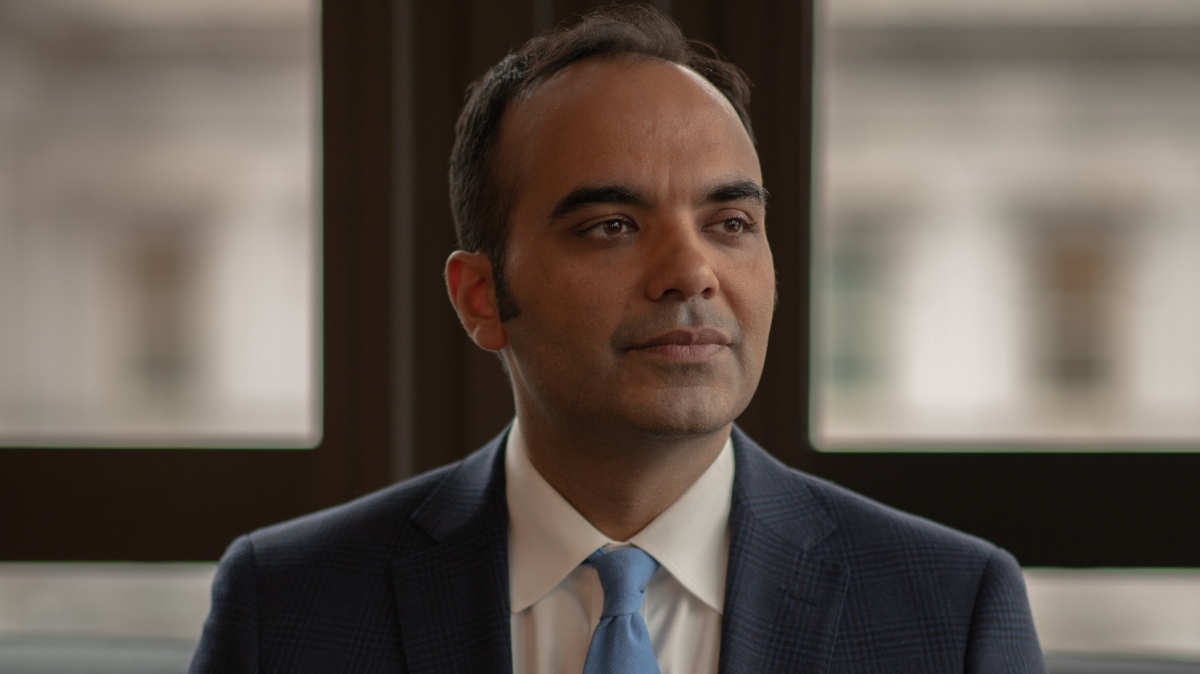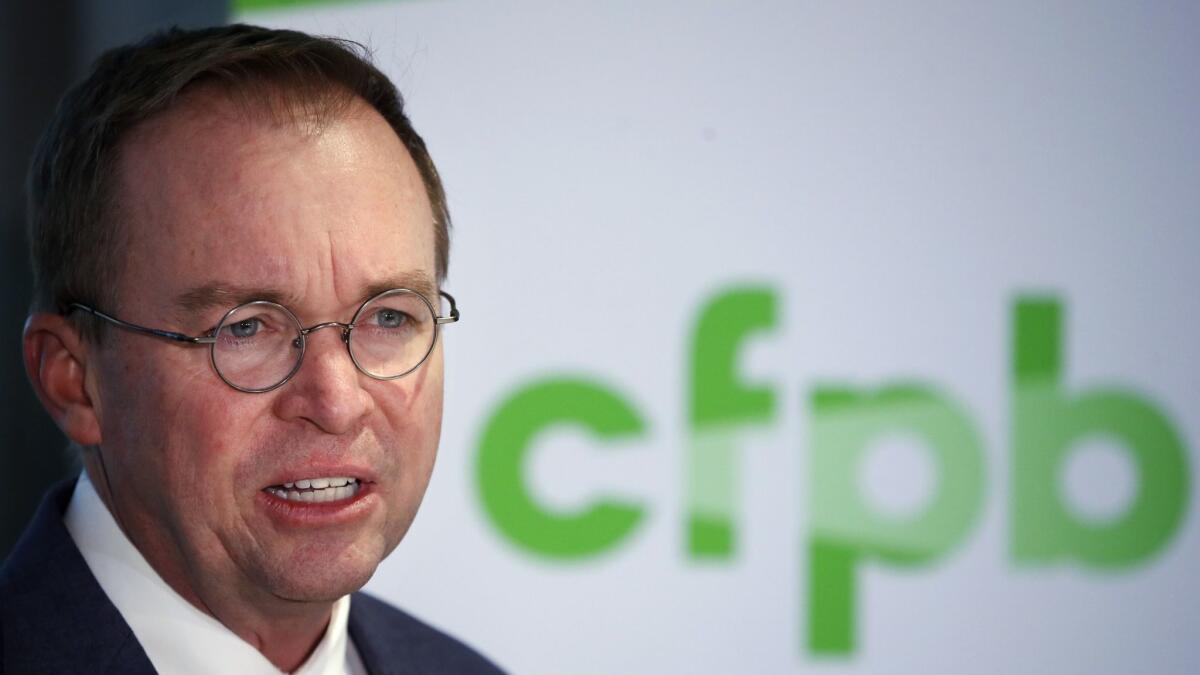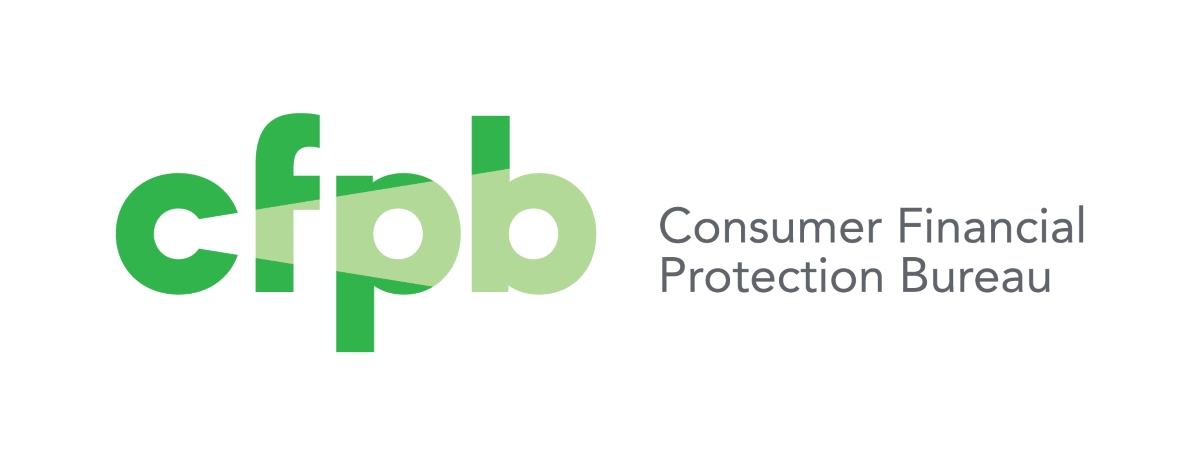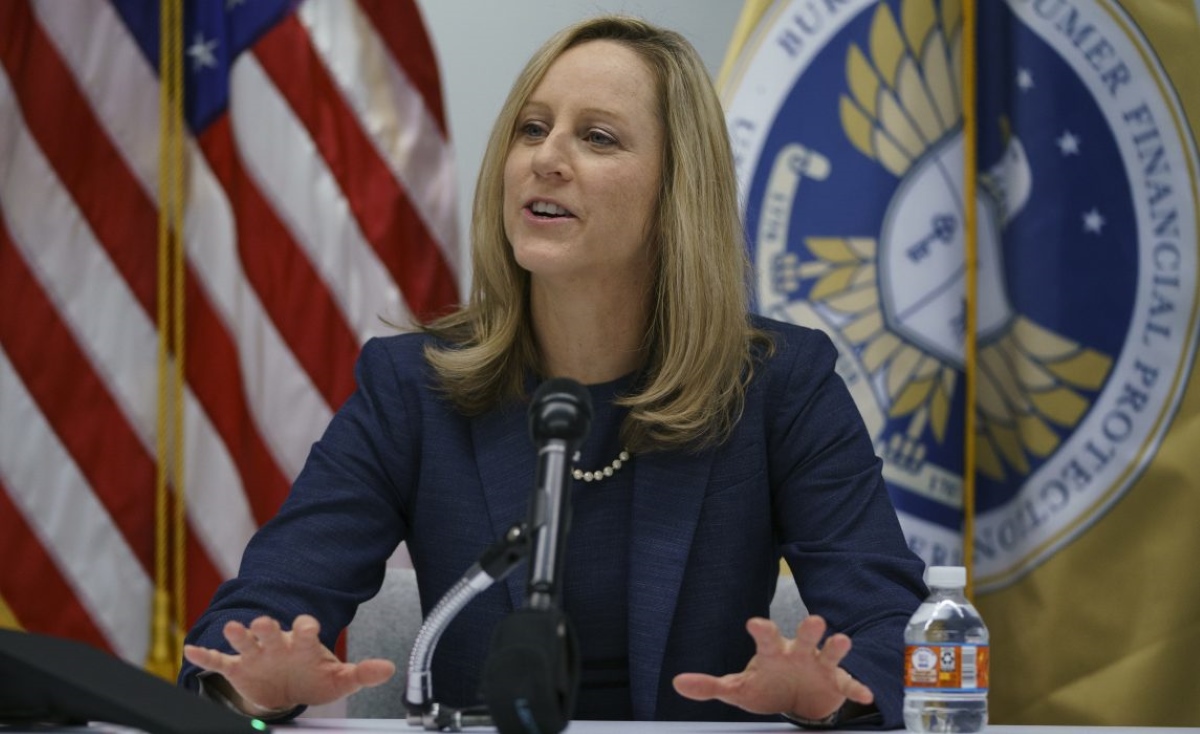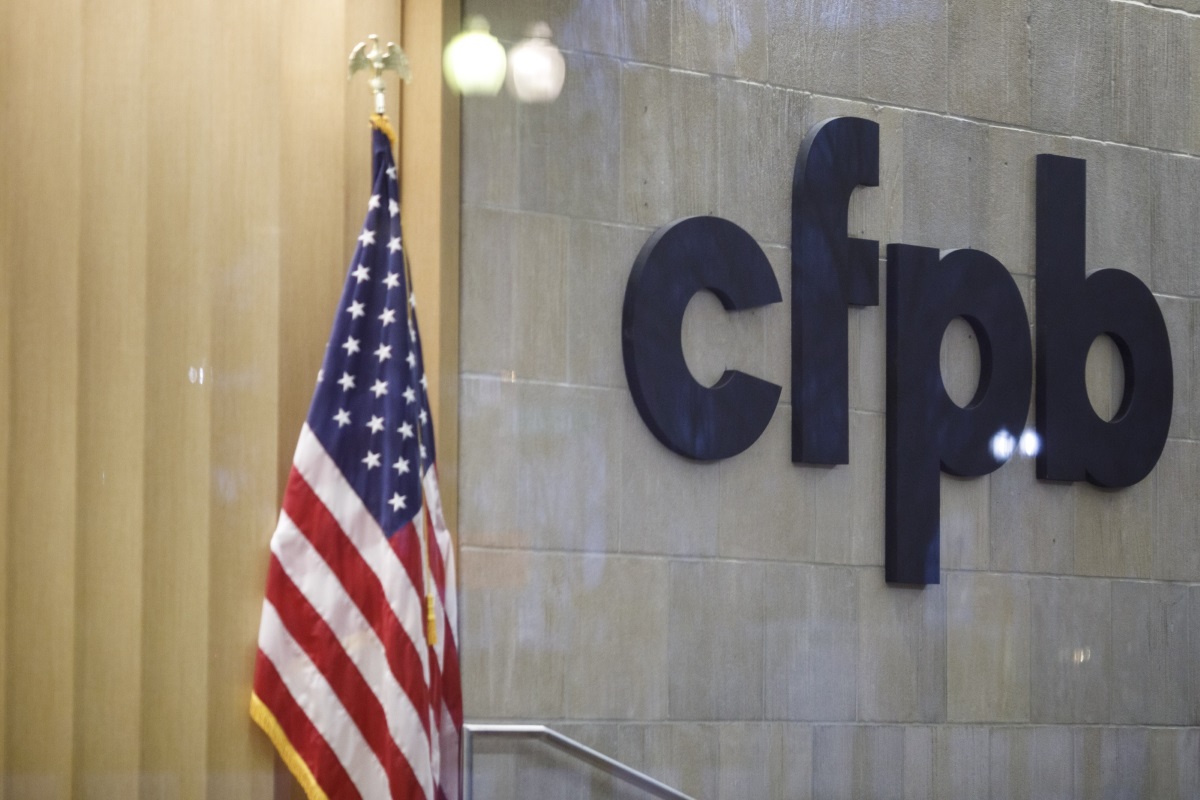Home>Finance>What Are The Powers Of The Consumer Financial Protection Bureau?


Finance
What Are The Powers Of The Consumer Financial Protection Bureau?
Modified: March 1, 2024
Discover the powers of the Consumer Financial Protection Bureau in the realm of finance, and how it aims to protect consumers from financial abuses and promote transparency.
(Many of the links in this article redirect to a specific reviewed product. Your purchase of these products through affiliate links helps to generate commission for LiveWell, at no extra cost. Learn more)
Table of Contents
- Introduction
- Background of the Consumer Financial Protection Bureau
- Role and Responsibilities of the Consumer Financial Protection Bureau
- Consumer Complaint and Information Database
- Supervision and Examination of Financial Institutions
- Enforcement of Consumer Financial Protection Laws
- Regulation and Rulemaking Authority
- Consumer Education and Empowerment Initiatives
- Collaboration with Other Agencies and Stakeholders
- Conclusion
Introduction
The Consumer Financial Protection Bureau (CFPB) is a government agency established under the Dodd-Frank Wall Street Reform and Consumer Protection Act in 2010. Its primary objective is to protect and educate consumers in the financial marketplace. With a mission to ensure fairness, transparency, and accountability in financial products and services, the CFPB has emerged as a powerful regulator in the financial industry.
As the global financial landscape continues to evolve and become increasingly complex, individuals and households face numerous challenges in navigating the financial marketplace. From predatory lending practices to deceptive financial products, consumers often find themselves at a disadvantage when dealing with financial institutions.
The creation of the CFPB signifies a significant shift towards safeguarding consumer interests and ensuring that consumers have access to accurate information and fair treatment. With a comprehensive approach to consumer protection, the CFPB has been granted extensive powers to regulate, supervise, and enforce consumer financial protection laws.
In this article, we will explore the powers and responsibilities of the Consumer Financial Protection Bureau, shedding light on its role in promoting financial stability and the well-being of consumers. From overseeing consumer complaints to conducting examinations of financial institutions, the CFPB plays a critical role in protecting consumers and fostering a more transparent and equitable financial marketplace.
Background of the Consumer Financial Protection Bureau
The Consumer Financial Protection Bureau (CFPB) was established in response to the 2008 financial crisis, which exposed numerous predatory practices in the financial industry and highlighted the need for stronger consumer protection measures. Prior to the creation of the CFPB, consumer financial protection relied on a fragmented system of regulatory bodies.
The CFPB was officially launched on July 21, 2011, and became the first agency solely dedicated to protecting consumers in the financial marketplace. It was designed to operate independently and autonomously to ensure that consumer interests are at the forefront of its activities.
One of the key reasons for the establishment of the CFPB was to consolidate and streamline consumer financial protection efforts. It has jurisdiction over a wide range of financial institutions, including banks, credit unions, mortgage lenders, payday lenders, debt collectors, and credit reporting agencies. By centralizing the supervision and enforcement of consumer financial protection laws, the CFPB aims to create a more efficient and effective regulatory framework.
The CFPB is headed by a Director, who is appointed by the President of the United States with the advice and consent of the Senate. The Director is responsible for guiding the overall strategy and direction of the CFPB, ensuring that its mission of consumer protection is carried out effectively.
Additionally, the CFPB operates under a strong degree of transparency and accountability. It is required to submit annual reports to Congress, detailing its activities, budget, and significant achievements. This ensures that the agency remains accountable to both lawmakers and the public.
The establishment of the CFPB was not without controversy. Some critics argued that the agency would have unchecked powers and hinder economic growth by imposing burdensome regulations on financial institutions. However, proponents of the CFPB argue that it is essential for protecting consumers from predatory practices and promoting fair and transparent financial services.
Overall, the creation of the Consumer Financial Protection Bureau represents a significant step towards strengthening consumer protection in the financial marketplace. With its focused mission, centralized authority, and commitment to transparency, the CFPB has the necessary tools to protect consumers and ensure that their rights are upheld in a rapidly changing financial landscape.
Role and Responsibilities of the Consumer Financial Protection Bureau
The Consumer Financial Protection Bureau (CFPB) is entrusted with a wide range of roles and responsibilities aimed at protecting consumers in the financial marketplace. These responsibilities encompass various aspects of consumer financial protection, including regulation, enforcement, supervision, education, and advocacy.
One of the primary responsibilities of the CFPB is to regulate and enforce federal consumer financial protection laws. It has the power to write rules and regulations that govern the conduct of financial institutions, ensuring that consumers are treated fairly and transparently. The CFPB also has the authority to enforce these laws, taking legal action against entities that engage in predatory or deceptive practices.
Another crucial role of the CFPB is to supervise financial institutions to ensure compliance with consumer protection laws. By conducting examinations and collecting data, the CFPB identifies risks and potential violations, taking appropriate actions to address them. This supervisory role helps maintain the integrity of the financial system and safeguards consumer interests.
In addition to regulation and enforcement, the CFPB plays a vital role in consumer education and empowerment. Through its initiatives and resources, the CFPB provides consumers with the knowledge and tools they need to make informed financial decisions. This includes developing educational materials, offering financial literacy programs, and providing resources for financial guidance and assistance.
The CFPB also operates a Consumer Complaint Database, which allows consumers to submit complaints about various financial products and services. This database serves as a valuable resource for consumers, as well as for the CFPB, to identify patterns of misconduct and take appropriate action. The CFPB also works with financial institutions to resolve consumer complaints and ensure that they are handled in a fair and timely manner.
Furthermore, the CFPB collaborates with other government agencies and stakeholders to promote consumer financial protection. It works closely with state regulators, law enforcement agencies, and consumer advocacy groups to share information, coordinate efforts, and address emerging challenges in the financial marketplace.
Overall, the Consumer Financial Protection Bureau has a multifaceted role in safeguarding consumer interests. Through its regulatory powers, enforcement actions, supervision of financial institutions, consumer education initiatives, and collaboration with stakeholders, the CFPB strives to level the playing field for consumers and ensure fairness and transparency in the financial marketplace.
Consumer Complaint and Information Database
The Consumer Financial Protection Bureau (CFPB) operates a Consumer Complaint Database, which serves as a valuable resource for consumers, financial institutions, and the CFPB itself. This database allows consumers to submit complaints about various financial products and services, providing a platform for them to voice their concerns and seek resolution.
The Consumer Complaint Database plays a crucial role in the CFPB’s mission to protect consumers and ensure fair treatment in the financial marketplace. It serves as a centralized repository of consumer complaints, providing valuable insights into the types of issues consumers face and the practices of financial institutions.
Consumers can submit complaints online through the CFPB’s website, providing details about their experience with a specific financial product or service. The complaints can cover a wide range of issues, such as billing disputes, unauthorized charges, misleading marketing practices, and problems with loan servicing or debt collection.
When a consumer submits a complaint, the CFPB reviews and forwards it to the appropriate financial institution for response. The institution is required to investigate the complaint and respond to both the consumer and the CFPB within a specified timeframe. This process ensures that consumer complaints are taken seriously and addressed promptly.
One of the primary benefits of the Consumer Complaint Database is its ability to identify patterns of misconduct and track industry-wide issues. The CFPB analyzes the data from consumer complaints to detect trends and potential violations of consumer financial protection laws. This information aids in prioritizing regulatory actions, targeting enforcement efforts, and shaping rulemaking initiatives.
Financial institutions also benefit from the Consumer Complaint Database. By monitoring and analyzing the complaints made against them, institutions can gain valuable insights into areas where they may need to improve their products or services. This feedback can inform their customer service practices, product development, and complaint resolution processes.
Moreover, the Consumer Complaint Database provides transparency and accountability in the financial marketplace. It allows consumers to access information about the complaints lodged against specific financial institutions, enabling them to make more informed decisions when engaging with these institutions.
The CFPB also publishes aggregated data from the Consumer Complaint Database in its public reports, shedding light on industry-wide practices and issues. This information serves as a valuable resource for researchers, policymakers, and consumer advocacy groups, informing discussions and initiatives related to consumer financial protection.
Overall, the Consumer Complaint and Information Database plays a significant role in promoting transparency, accountability, and consumer empowerment in the financial marketplace. By providing a platform for consumers to voice their concerns and tracking industry-wide issues, the CFPB can take targeted regulatory actions and ensure that consumers are treated fairly and transparently.
Supervision and Examination of Financial Institutions
The Consumer Financial Protection Bureau (CFPB) holds the responsibility of overseeing and examining various financial institutions to ensure compliance with consumer financial protection laws. This supervision and examination process plays a crucial role in safeguarding consumer interests and maintaining the integrity of the financial marketplace.
The CFPB’s supervision and examination activities encompass a wide range of financial institutions, including banks, credit unions, mortgage lenders, payday lenders, debt collectors, and credit reporting agencies. Through its examinations, the CFPB assesses the institution’s operations, internal controls, and compliance with applicable laws and regulations.
Financial institutions subject to CFPB’s supervision are categorized based on their size and risk profile. Larger institutions, known as “larger participants,” are subject to ongoing supervision and examinations to ensure that they are operating in a fair and transparent manner. Smaller institutions may also be subject to targeted examinations based on risk assessments or consumer complaints.
During the examination process, the CFPB reviews various aspects of the institution’s operations. This includes evaluating its compliance management systems, policies and procedures, consumer complaint handling processes, and quality of customer service. The CFPB has the authority to request documents, conduct interviews, and perform on-site examinations to gather information and assess compliance.
One of the key goals of the supervision and examination process is to mitigate risks and identify potential violations of consumer financial protection laws. Through the examination findings, the CFPB can identify and address areas of concern, such as unfair or deceptive practices, discriminatory lending practices, or inadequate disclosure of terms and fees.
Financial institutions are required to respond to examination findings and take appropriate actions to address any identified deficiencies or violations. The CFPB works with the institution, providing guidance and recommendations for remediation. If necessary, the CFPB may take enforcement actions, such as issuing fines, restitution, or imposing new requirements, to ensure compliance and protect consumer interests.
Moreover, the CFPB conducts regular risk assessments to determine the areas and institutions that require more focused attention. These assessments consider factors such as consumer complaints, industry trends, and changes in the regulatory landscape. By prioritizing its supervision efforts based on risk assessment, the CFPB can allocate resources effectively and respond to emerging challenges in the financial marketplace.
The supervision and examination process serves as a crucial component of the CFPB’s overall strategy to protect consumers. It ensures that financial institutions are held accountable for their actions and adhere to consumer financial protection laws. By promoting fair and transparent practices, the CFPB seeks to foster consumer trust and confidence in the financial system.
Enforcement of Consumer Financial Protection Laws
The Consumer Financial Protection Bureau (CFPB) has been granted significant powers to enforce consumer financial protection laws and hold financial institutions accountable for their actions. Through its enforcement activities, the CFPB aims to ensure that consumers are protected from unfair, deceptive, and abusive practices in the financial marketplace.
The CFPB has the authority to take legal action against financial institutions that violate consumer financial protection laws. This includes laws such as the Truth in Lending Act, the Fair Credit Reporting Act, and the Equal Credit Opportunity Act, among others. When the CFPB identifies potential violations, it can launch investigations, gather evidence, and initiate legal proceedings in both administrative and federal courts.
One way the CFPB enforces consumer financial protection laws is by imposing civil monetary penalties. These penalties can be substantial and reflect the severity of the violation. The CFPB has the authority to levy fines on financial institutions that engage in unfair, deceptive, or abusive practices, aiming to deter such behavior and promote compliance.
In addition to civil penalties, the CFPB has the power to provide monetary relief to consumers who have been harmed by violations of consumer financial protection laws. This includes restitution to compensate consumers for financial losses or damages they have suffered as a result of unfair practices. By providing restitution, the CFPB seeks to restore consumers to the position they would have been in had the violation not occurred.
Furthermore, the CFPB can issue cease and desist orders against financial institutions to put an immediate stop to any ongoing violations. These orders require the institution to cease the unlawful practices and take steps to rectify the harm caused to consumers. Failure to comply with a cease and desist order can result in further penalties and legal actions.
The CFPB’s enforcement actions also serve as a deterrent, sending a clear message to the financial industry that violations of consumer financial protection laws will not be tolerated. By taking high-profile enforcement actions and publicizing the outcomes, the CFPB aims to create a culture of compliance and encourage financial institutions to prioritize consumer protection.
Collaboration with other regulatory and enforcement agencies is another important aspect of the CFPB’s enforcement efforts. The CFPB works closely with federal and state agencies, sharing information, coordinating investigations, and partnering in legal actions when appropriate. This collaborative approach enhances the efficiency and effectiveness of enforcement efforts and ensures a comprehensive response to violations of consumer financial protection laws.
Overall, the enforcement of consumer financial protection laws is a critical tool in the CFPB’s arsenal to protect consumers from unfair practices. Through civil penalties, restitution to harmed consumers, cease and desist orders, collaboration with other agencies, and targeted investigations, the CFPB aims to hold financial institutions accountable and promote a fair and transparent financial marketplace.
Regulation and Rulemaking Authority
The Consumer Financial Protection Bureau (CFPB) has been vested with significant regulatory and rulemaking authority to protect consumers in the financial marketplace. This authority allows the CFPB to establish and enforce rules and regulations that govern the conduct of financial institutions, ensuring that consumers are treated fairly and transparently.
Under the Dodd-Frank Wall Street Reform and Consumer Protection Act, the CFPB has the power to write rules and regulations that cover a wide range of consumer financial products and services. These rules have the force of law and apply to various financial institutions, such as banks, credit unions, mortgage lenders, debt collectors, and payday lenders.
When developing rules, the CFPB conducts extensive research, solicits public input, and considers input from stakeholders, including consumers, industry experts, and advocacy groups. This inclusive approach helps the CFPB to gather diverse perspectives and ensure that regulations are balanced and effective in promoting consumer protection.
The CFPB’s rulemaking authority covers various aspects of consumer financial protection, including mortgage lending, credit card practices, debt collection, payday lending, and more. By establishing clear rules and standards, the CFPB seeks to prevent unfair, deceptive, or abusive practices, and promote transparency, accountability, and access to responsible financial products and services.
Once a rule is proposed, the CFPB allows for a period of public comment, during which interested parties can provide feedback and voice their concerns or suggestions regarding the rule. The CFPB carefully considers these comments before finalizing the rule. This open and transparent rulemaking process ensures that the regulations reflect the needs and interests of consumers and the financial industry.
Financial institutions are required to comply with the rules and regulations enacted by the CFPB. The CFPB monitors compliance through its supervisory and examination processes, as well as through consumer complaints and whistleblower reports. Institutions found in violation of the rules may face enforcement actions, including civil penalties and restitution to affected consumers.
The CFPB’s rulemaking authority also includes the ability to issue interpretive rules and guidelines to clarify existing regulations. These interpretive rules provide guidance to the industry and consumers on how specific provisions of the law should be interpreted and applied in practice.
Furthermore, the CFPB has the power to exempt certain financial institutions from certain rules, considering the size, nature, and scope of their operations. This helps to ensure that regulations are appropriately tailored to the different types of institutions and minimize undue burdens on smaller entities while still protecting consumers.
Overall, the CFPB’s regulation and rulemaking authority is a fundamental component of its mission to protect consumers in the financial marketplace. Through the development and enforcement of rules and regulations, the CFPB promotes fairness, transparency, and accountability, ensuring that consumers can make informed financial decisions and have access to safe and reliable financial products and services.
Consumer Education and Empowerment Initiatives
The Consumer Financial Protection Bureau (CFPB) recognizes the importance of consumer education and empowerment in promoting financial well-being. As part of its mission, the CFPB undertakes various initiatives to provide consumers with the knowledge and tools they need to make informed financial decisions and protect themselves in the marketplace.
Consumer education is a key focus for the CFPB. The bureau develops and disseminates educational materials, including guides, brochures, and online resources, to help consumers understand their rights and responsibilities when it comes to financial products and services. These materials cover a broad range of topics, such as budgeting, saving, credit management, and avoiding scams.
In addition to generic educational materials, the CFPB tailors its resources to specific populations, including students, older adults, veterans, and underserved communities. By providing targeted information, the CFPB ensures that individuals from diverse backgrounds have access to relevant and actionable financial knowledge.
The CFPB also promotes financial literacy through its Financial Education Exchange, which offers free resources for educators, financial coaches, and community organizations. These resources include lesson plans, toolkits, and activities designed to enhance financial capability and decision-making skills.
Another initiative undertaken by the CFPB is its consumer empowerment efforts. The bureau encourages consumers to take an active role in managing their finances and advocating for their rights. Through its empowering initiatives, the CFPB encourages consumers to ask questions, compare financial products, and report any unfair or deceptive practices they encounter.
The CFPB operates a toll-free helpline and a comprehensive website where consumers can access information, submit complaints, and find resources to address their financial concerns. These channels serve as vital communication links between consumers and the CFPB, empowering individuals to seek assistance and voice their concerns.
Furthermore, the CFPB engages in partnerships with community organizations, consumer advocates, and other government agencies to expand the reach of its education and empowerment initiatives. By collaborating with various stakeholders, the CFPB amplifies its message, reaches underserved populations, and cultivates a network of support for consumer education and empowerment.
One significant initiative of the CFPB is its “Your Money, Your Goals” program, which aims to empower individuals with low incomes or experiencing financial challenges. This program provides training for frontline staff at social service organizations to help them assist their clients in achieving financial goals and making informed financial decisions.
Moreover, the CFPB conducts research and studies to ensure that its consumer education initiatives are based on evidence and the latest insights. By understanding consumer behavior and financial challenges, the CFPB can tailor its educational resources and strategies to address the specific needs of consumers effectively.
Overall, the CFPB’s consumer education and empowerment initiatives play a vital role in promoting financial well-being and protection. Through its educational resources, empowerment efforts, partnerships, and research, the CFPB empowers consumers to make informed financial decisions, protect themselves from scams and deceptive practices, and build a strong foundation for financial health and resilience.
Collaboration with Other Agencies and Stakeholders
Collaboration is a cornerstone of the Consumer Financial Protection Bureau’s (CFPB) approach to consumer protection. The CFPB recognizes the importance of working with other government agencies, regulators, and stakeholders to foster a comprehensive and coordinated approach to consumer financial protection.
The CFPB collaborates with federal, state, and local agencies to share information and coordinate efforts. By partnering with agencies such as the Federal Trade Commission (FTC), the Department of Justice (DOJ), and state attorneys general, the CFPB can leverage their expertise, resources, and enforcement powers to maximize the impact of its consumer protection efforts.
Additionally, the CFPB actively engages with other regulators such as the Federal Reserve, the Office of the Comptroller of the Currency (OCC), and the Securities and Exchange Commission (SEC). Through regular communication and coordination, the CFPB ensures a consistent regulatory approach and avoids duplicative efforts in addressing consumer financial protection issues.
The CFPB also seeks input and feedback from a broad range of stakeholders, including consumer advocacy groups, industry associations, financial institutions, and individual consumers. Through public forums, roundtable discussions, and comment periods, the CFPB gives stakeholders the opportunity to contribute their viewpoints and expertise to the policymaking process.
Furthermore, the CFPB actively collaborates with consumer advocacy groups to amplify its outreach and education efforts. By partnering with organizations that have expertise in serving vulnerable populations or specific communities, the CFPB can ensure that its resources and initiatives reach a wide range of consumers, particularly those who may be more susceptible to financial harm.
The CFPB also engages with financial institutions to promote compliance and enhance consumer protection. Through ongoing dialogue and communication, the CFPB seeks to foster a culture of compliance within the industry. This collaborative approach allows financial institutions to provide valuable insights into industry practices, while also ensuring that consumer concerns and feedback are taken into account.
Internationally, the CFPB collaborates with foreign regulatory bodies and organizations to share best practices and coordinate efforts. This collaboration helps address cross-border consumer protection challenges and promotes consistent standards in global financial services.
Through its collaborative approach, the CFPB ensures that its actions and initiatives are informed by diverse perspectives and expertise. By coordinating efforts with other agencies and stakeholders, the CFPB can leverage resources, avoid duplication of efforts, and cultivate a more holistic and effective approach to consumer protection.
Overall, collaboration with other agencies and stakeholders is a fundamental aspect of the CFPB’s strategy to promote consumer financial protection. By working together, the CFPB and its partners can enhance regulatory capabilities, share insights and data, and develop more comprehensive solutions to address the evolving challenges in the financial marketplace.
Conclusion
The Consumer Financial Protection Bureau (CFPB) has emerged as a powerful advocate for consumers in the financial marketplace. Through its various roles and responsibilities, the CFPB works tirelessly to ensure fairness, transparency, and accountability in the financial industry. From regulating and supervising financial institutions to enforcing consumer financial protection laws, the CFPB plays a pivotal role in safeguarding consumer interests.
With its supervision and examination activities, the CFPB ensures that financial institutions comply with consumer protection laws, mitigate risks, and address any potential violations. Through its enforcement actions, the CFPB holds accountable those who engage in unfair or deceptive practices, imposing penalties and enforcing restitution for affected consumers.
The CFPB’s rulemaking authority allows it to establish clear regulations that govern the conduct of financial institutions, protecting consumers from predatory practices and fostering a transparent and equitable financial marketplace. Through its education and empowerment initiatives, the CFPB equips consumers with the knowledge and tools they need to make informed financial decisions and protect themselves from scams and deceptive practices.
The collaboration between the CFPB and other agencies and stakeholders strengthens consumer protection efforts. By working with regulatory bodies, consumer advocacy groups, and financial institutions, the CFPB leverages resources, shares insights, and cultivates a comprehensive approach to consumer financial protection.
In conclusion, the Consumer Financial Protection Bureau plays a vital role in protecting consumers in the financial marketplace. Through its powers, responsibilities, and collaborative efforts, the CFPB strives to ensure that consumers have access to safe and reliable financial products and services. By promoting fairness, transparency, and accountability, the CFPB contributes to the stability and well-being of both individual consumers and the broader financial system. Through its ongoing commitment to consumer protection, the CFPB continues to play a critical role in shaping a more equitable and consumer-friendly financial landscape.


